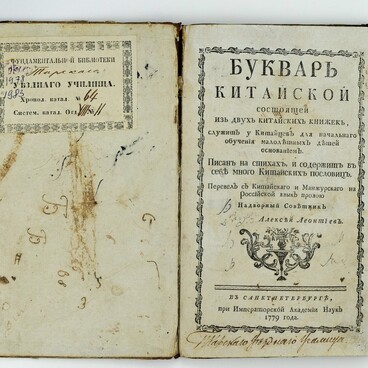The displayed mace belonged to the ataman of the Cossack Bolshe-Atmasskaya stanitsa of the Siberian Cossack Host, but his name has not been preserved. It came to the museum from the Omsk ammunition depot in 1925.
In the 13th 一 17th centuries, the mace was used as a weapon, but later it lost its combat value. The Cossacks gave such mace to their leader, a stanitsa or a village ataman. This weapon became the symbol of his power.
The Siberian Cossack Combat Host existed in the 19th 一 the early 20th century. It had its territory, as well as management systems, educational institutions, and economic structures. The Cossacks were a separate military estate and served in the army. For their military service, they got the right to use the land, but during their duty, they had to provide for themselves financially, fully or partially.
On December 6, 1582, according to the ancient legend, tsar Ivan the Terrible gave the Yermak army the name of ‘Tsar Service Host’ as a reward for the capture of the Siberian khanate. The Cossacks from the army and their descendants laid the foundations of the military-serving class of Russian Siberia. During the 18th century, many city Cossacks moved to frontier lines 一 they formed the Siberian Cossack Combat Host.
Before the Russian revolution of 1917, there was self-governance in Cossack communities and settlements. Ataman was elected by the whole stanitsa. He distributed the land, arable areas, and duties among the community members. Moreover, he was responsible for the condition of ammunition and Cossacks' horses. The stanitsa ataman was subordinate to the so-called kuren (village) atamans or army atamans. They were appointed by order of the Emperor, therefore they were also called ‘nakazny (appointed) atamans.’
In the 13th 一 17th centuries, the mace was used as a weapon, but later it lost its combat value. The Cossacks gave such mace to their leader, a stanitsa or a village ataman. This weapon became the symbol of his power.
The Siberian Cossack Combat Host existed in the 19th 一 the early 20th century. It had its territory, as well as management systems, educational institutions, and economic structures. The Cossacks were a separate military estate and served in the army. For their military service, they got the right to use the land, but during their duty, they had to provide for themselves financially, fully or partially.
On December 6, 1582, according to the ancient legend, tsar Ivan the Terrible gave the Yermak army the name of ‘Tsar Service Host’ as a reward for the capture of the Siberian khanate. The Cossacks from the army and their descendants laid the foundations of the military-serving class of Russian Siberia. During the 18th century, many city Cossacks moved to frontier lines 一 they formed the Siberian Cossack Combat Host.
Before the Russian revolution of 1917, there was self-governance in Cossack communities and settlements. Ataman was elected by the whole stanitsa. He distributed the land, arable areas, and duties among the community members. Moreover, he was responsible for the condition of ammunition and Cossacks' horses. The stanitsa ataman was subordinate to the so-called kuren (village) atamans or army atamans. They were appointed by order of the Emperor, therefore they were also called ‘nakazny (appointed) atamans.’
The Siberian Host was under the jurisdiction of the Department of Cossack Troops of the Ministry of War. The Chancellery dealt with war issues and acted as the army headquarters. The Economic Department managed administrative affairs. It conveyed instructions to kuren atamans. The Department dealt with issues related to land, forests, and water resources in the territory under the army’s control.



